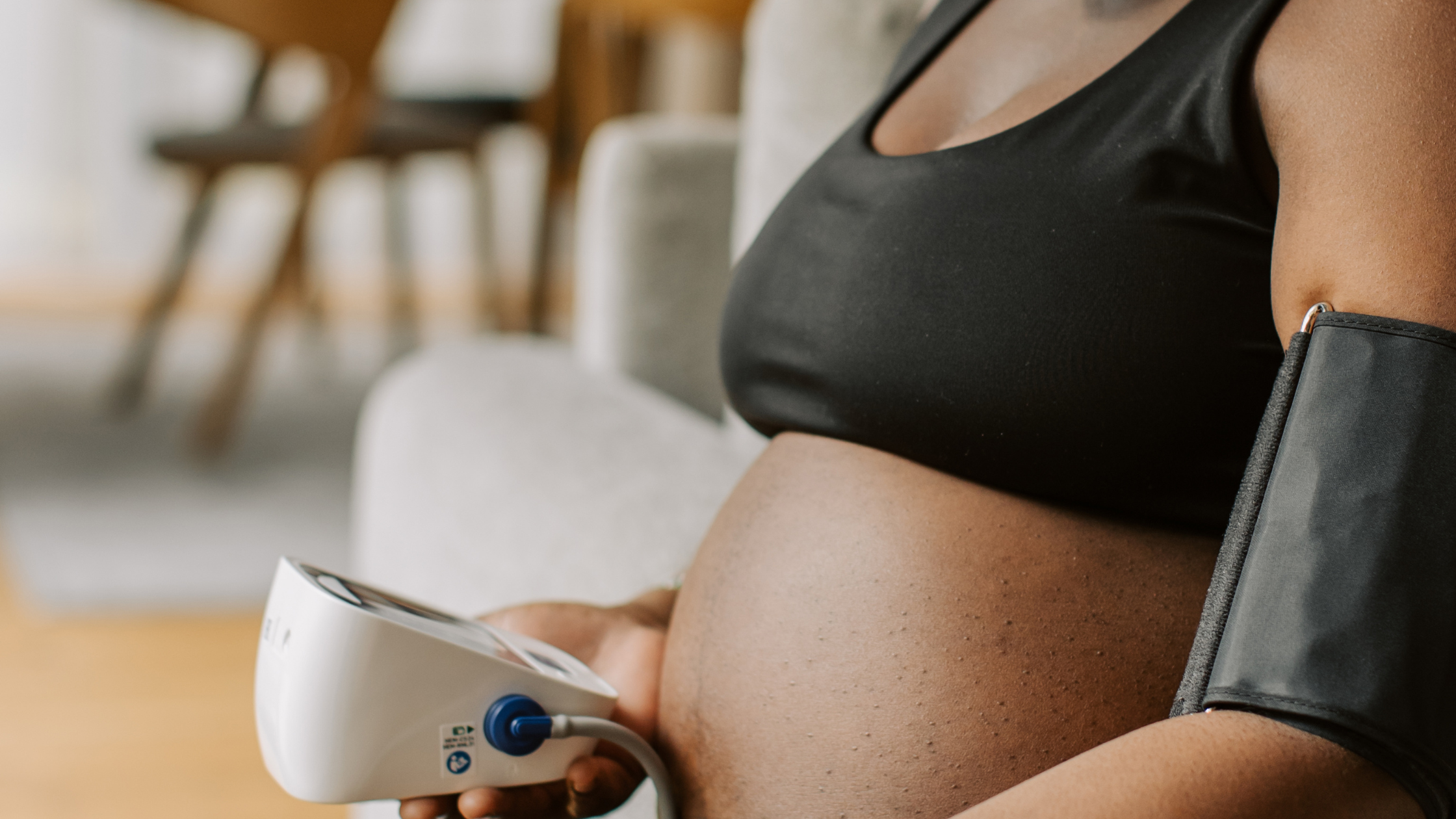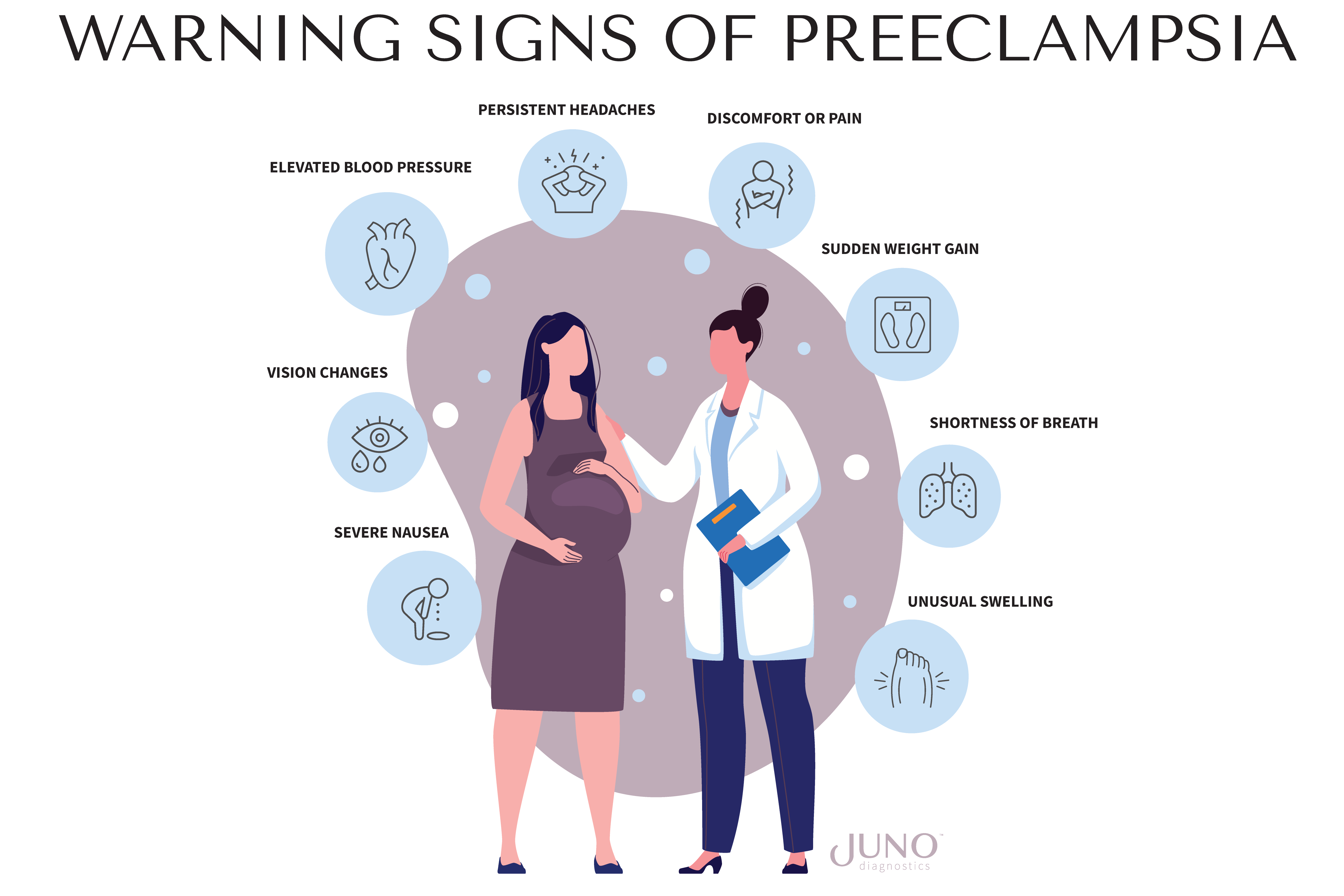Preeclampsia: Signs, Risk Factors, & Impacts

If you're an expectant mother or parent, we understand that for all the joy surrounding pregnancy, there are concerns and worries. At Juno, we aim to address some of those concerns and give you peace of mind with information concerning topics like preeclampsia.
Preeclampsia is characterized as a serious hypertensive disorder that impacts expectant parents during or soon after pregnancy. Continue reading as we look to unravel some of the complexities of preeclampsia, explore symptoms, risk factors, and potential complications. Our goal is to provide a comprehensive understanding, enabling you to identify warning signs, seek timely medical attention, and take proactive steps for a healthier pregnancy. Know that despite the risks associated with pregnancy- you’re not alone. We're here to provide guidance and support as your partner in pregnancy.
What is preeclampsia?
Preeclampsia is a serious blood pressure condition that can occur during or after childbirth (postpartum preeclampsia). Usually occurring after 20 weeks, preeclampsia is a condition that impacts pregnancies worldwide. Unfortunately, between 10 to 15% of maternal deaths are linked to preeclampsia and associated complications. If left untreated, the condition can cause life-threatening issues for you and your baby. But remember, in most cases, healthy babies are successfully and safely delivered, which is why it’s essential to recognize the signs of preeclampsia and address them quickly!
Preeclampsia signs & symptoms
Because preeclampsia can develop without you realizing it, it’s crucial to recognize the signs and symptoms to ensure early detection and appropriate medical intervention. There are quite a few ways the condition can manifest but keep a close eye out for the following:
- Elevated blood pressure, either accompanied by protein in the urine or in isolation
- Vision changes, such as blurred vision, experiencing flashing lights, seeing spots, or heightened sensitivity to light
- Persistent headaches that do not subside with regular remedies or pain relief
- Severe Nausea (persistent feeling of sickness), vomiting, or dizziness that may be out of the ordinary
- Discomfort or pain in the upper right area of the abdomen or shoulder.
- Sudden, significant weight gain of 2 to 5 pounds within a week.
- Unusual swelling in the legs, hands, or face
- Difficulty breathing or shortness of breath, even during regular activities
While it might be easy to dismiss some of these signs as everyday pregnancy things, you should consult your healthcare provider promptly for a thorough checkup. Early detection and appropriate management can mean all the difference in safeguarding both you and your baby’s well-being.

Preeclampsia risk factors
Any pregnant person can develop preeclampsia. And while many otherwise healthy people develop the condition, some researchers believe first-time parents may be at an increased risk; additionally, there are some high-risk factors to consider. If you have a history of preeclampsia, if you’re pregnant with multiples (twins or more), or if you have chronic high blood pressure, diabetes, kidney disease, or an autoimmune condition, you may fall within the category of "at-risk."
If any of the above applies to you, please speak with your provider about your risk factors and about what you can do to stay healthy and reduce your chances of having a preterm birth or additional complications.
Impacts of preeclampsia
Preeclampsia can impact you and your baby. One of the most common results of the condition, whether treated early on or not, is preterm labor and birth. Preterm birth, or premature birth, is when labor and delivery occur early, typically before 37 weeks of pregnancy. If you develop preeclampsia, your provider may suggest preterm labor as a safe option for helping prevent complications.
Left untreated, preeclampsia can cause serious and life-threatening complications, including seizures and strokes. Stay vigilant and tell your healthcare provider immediately if you experience or notice any of the warning signs of preeclampsia.
Importance of awareness
Through awareness of the signs and symptoms of preeclampsia, expectant mothers can take proactive steps to protect their health and the well-being of their babies. Regular prenatal check-ups and open communication with your healthcare provider is essential in monitoring blood pressure, protein levels in urine, and other indicators of preeclampsia.
Remember, early detection of preeclampsia can significantly improve outcomes and reduce the risks associated with this condition. The pregnancy journey should be filled with excitement and anticipation, and we hope that by staying informed and seeking necessary care, expectant families can confidently embrace this experience.
At Juno, our mission is to ensure that every expectant parent gets the support they need for a healthy pregnancy and birth outcome. Together, we can prioritize maternal health. To explore how Juno is revolutionizing the delivery of high-quality prenatal information, click here: Learn More
Please note: JunoDx.com and the materials and information it contains are not intended to, and do not constitute medical or other health advice or diagnosis and should not be used as such. You should always consult with a qualified physician or health professional about your specific circumstances.



